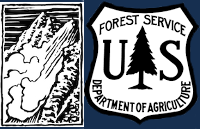Snowpack and Avalanche Discussion
<p>Since Friday, the mountains near Cooke City, West Yellowstone, and Island Park have received 16-30” of snow, equivalent to 2-3” of snow water equivalent, with Cooke City coming out on top. Snow fell on weak surfaces and strong winds are drifting new snow into cohesive slabs, making human-triggered avalanches likely on many slopes.</p>
<p><strong>Persistent slab avalanches</strong> breaking 1-3 feet deep on buried weak layers of facets and surface hoar formed during last week’s high pressure are likely. These will break widely and may be triggered remotely from terrain near steep slopes. Avalanches failing on older weak layers buried near the base of the snowpack are possible. The likelihood of avalanches is amplified on wind-loaded slopes where the weight of drifted snow adds stress to weak layers.</p>
<p>Take the relatively short list on the <a href="https://www.mtavalanche.com/avalanche-activity"><span>Avalanche Activity Log</span></a> with a grain of salt, given limited visibility:</p>
<ul>
<li>On Monday, Mark triggered a wind-loaded slope in the Centennial Mountains from a flat ridge top that broke 200 feet wide (<a href="https://youtube.com/shorts/26MdlE8SkEc"><strong><span>video</span></str…;)</li>
<li>A rider in the Lionhead area performed a re-entry, triggering a very small avalanche (<a href="https://youtube.com/shorts/I1BdaDmw-ko"><strong><span>video</span></str…;)</li>
<li>We received reports of a few small wind slab avalanches over the weekend near Cooke City (<a href="https://www.mtavalanche.com/avalanche-activity"><strong><span>avalanche log</span></strong></a>).</li>
</ul>
<p><span>Avoid wind-loaded slopes and limit travel on any slope steeper than 30 degrees. This requires cautious route-finding and conservative decision-making. The avalanche danger is CONSIDERABLE. <span> </span></span></p>
<p>The Madison and Gallatin Ranges received 12-20” of snow equal to 1.2-1.6” of SWE since Friday. The Big Sky area received the top end of this range.</p>
<p>Twenty to 40 mph winds are transporting recent snow into cohesive slabs and making human-triggered avalanches likely. Yesterday, <span>wind-loaded slopes cracked under our skis on switchbacks and in stability assessments in Beehive Basin (</span><a href="https://youtube.com/shorts/PBsMPg_BBQw"><strong><span>video</span></str…;), and </span>on Sunday, Mark and Alex observed cracks shooting 10-50 feet from their sleds in the Taylor Fork. Weak layers formed at the surface during last week’s high pressure are the primary culprit (<a href="https://www.mtavalanche.com/node/33944"><strong><span>observation</span…;, <a href="https://www.youtube.com/watch?v=y7Nm5dbbBqQ"><strong><span>video</span>…;
<p>Avoid wind-loaded slopes where human-triggered <strong>persistent slab </strong><span>and </span><strong>wind slab avalanches </strong>are likely. Dig down a few feet to look for weak layers and test for instability before considering travel on non-wind-loaded terrain steeper than 30 degrees. Shooting cracks, collapsing and recent avalanche activity supersede any indicator of <em>stability. </em></p>
<p>The avalanche danger level is CONSIDERABLE on wind-loaded slopes and MODERATE on other slopes in the Madison and Gallatin Ranges.</p>
<p>The Bridger Range has received less snow than the rest of the forecast area, with 11” equal to 1.0” of SWE since Friday and less wind. Avalanches are possible within recently drifted snow. With light winds, areas of concern for <strong>wind slab avalanches </strong>are upper-elevation terrain near ridgelines, on more prominent alpine faces and below cornices.</p>
<p>While weak layers formed under last week’s clear skies exist on some slopes, windy and warmer conditions interrupted widespread weak layer formation in the Bridger Range. Evaluate slopes for shooting cracks, a stiffening of the snow surface, and potential wind-loading before considering steep terrain. Dig below the recent snow to evaluate for instability at the interface of the older snow and snow that fell since Friday.</p>
<p><span>Human-triggered avalanches are possible, and the avalanche danger is MODERATE. </span></p>
KING AND QUEEN OF THE RIDGE RESULTS
On Saturday We closed out King and Queen of the Ridge with nearly $30,000 raised! We will post final numbers here after we confirm totals. Thank you to all who participated and raised funds for The Friends of the GNFAC.
